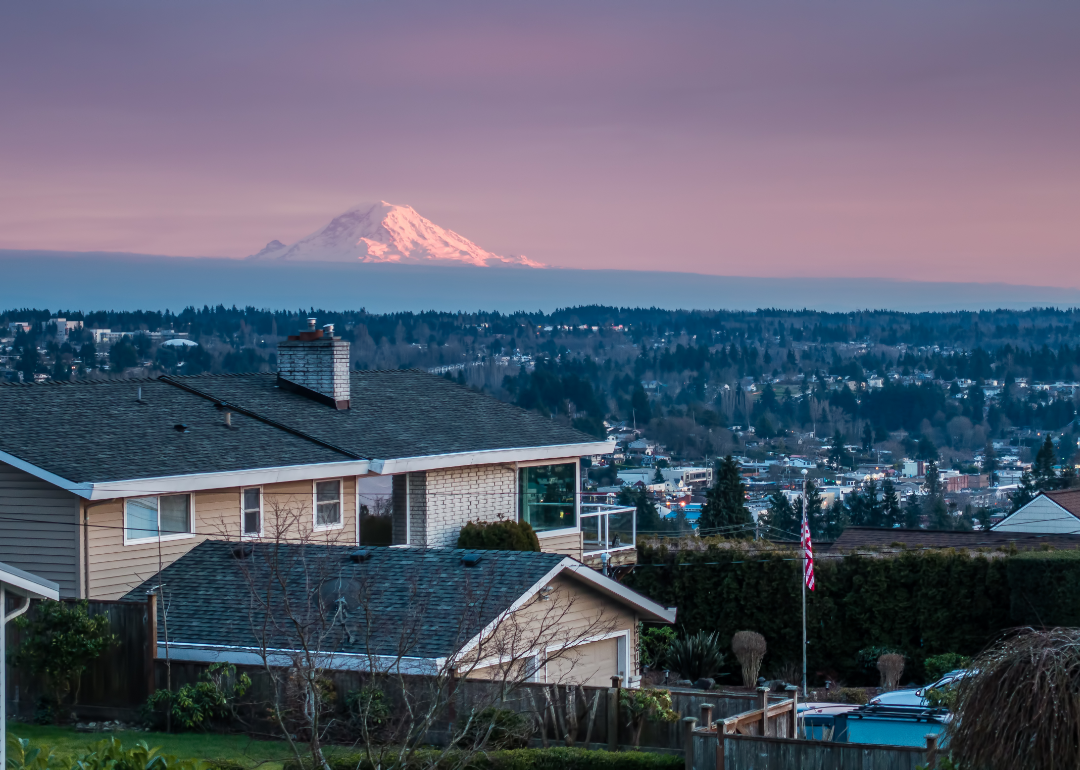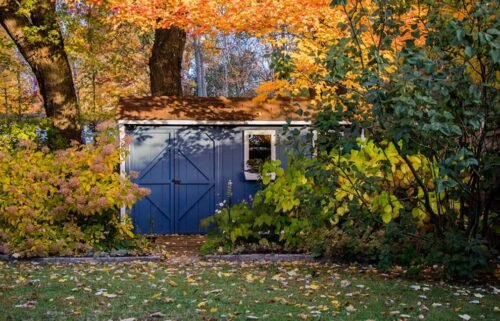Best West Coast small towns to live in

Canva
Best West Coast small towns to live in
Couple walking dogs on Carmel Beach.
The American dream of buying a home in a quaint small town is still alive and well. A growing number of people consider rural living ideal: In 2021, small towns and rural areas gained population, while cities lost people, according to a New York Times analysis of Census Bureau data.
A Pew survey in October 2021 found that about 1 in 5 Americans (19%) would most like to live in a city, but 35% wanted to live in rural areas, and 46% preferred suburbs. Inflation may mean some of those people can’t afford to leave cities or must go back, but their preferences remain.
Of course, a small town in a great location will always be more popular than one that’s truly remote. That’s where this list of the best small towns on the West Coast comes in handy. Stacker referenced Niche’s 2022 Best Places to Live and filtered the results to the West Coast and then narrowed them further to places under 5,000 residents. Niche calculated the best places to live based on cost, safety, weather quality, access to healthy living, and other factors.
Whether you’re considering a move or just want a peek into what small-town life could be like, this list will certainly inspire some home searches.
You may also like: Best place to live in every state
![]()
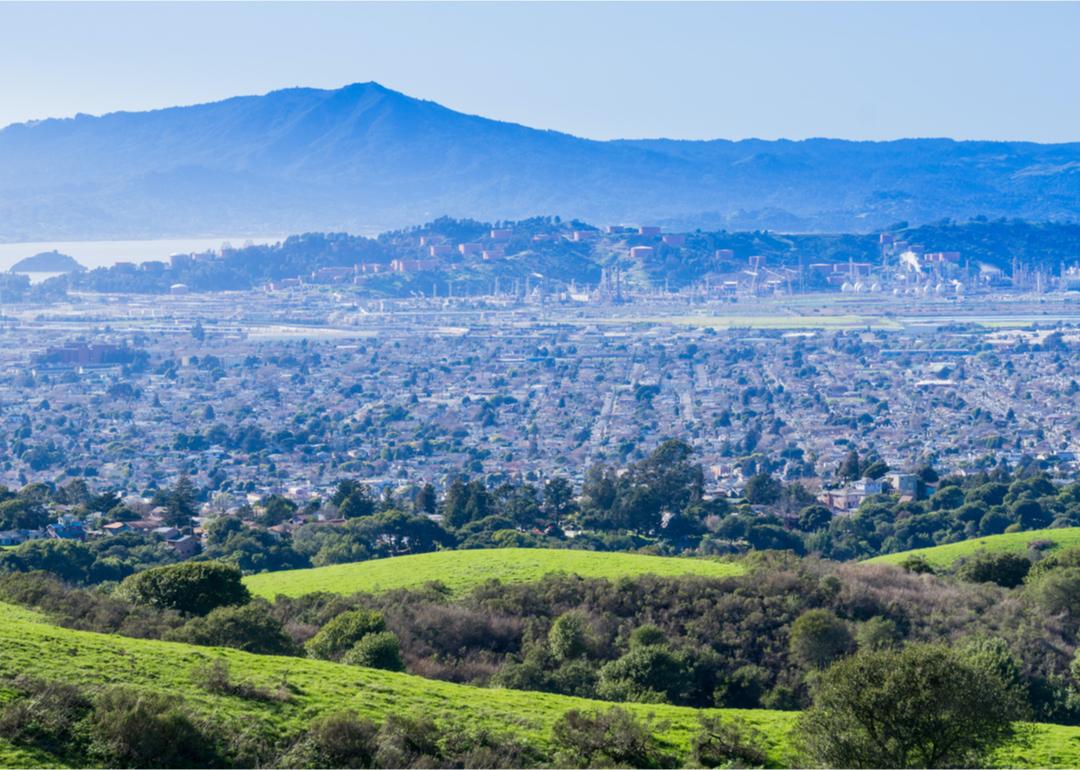
Sundry Photography // Shutterstock
#25. East Richmond Heights, California
View toward Richmond from Wildcat Canyon Regional Park.
– Population: 3,355
One Oakland Tribune advertisement from 1913 called East Richmond Heights “the garden of the gods.” Though that slogan might have been exaggerated to sell tracts of land, this quiet, small town still ranks highly for its diversity and family-friendly lifestyle.
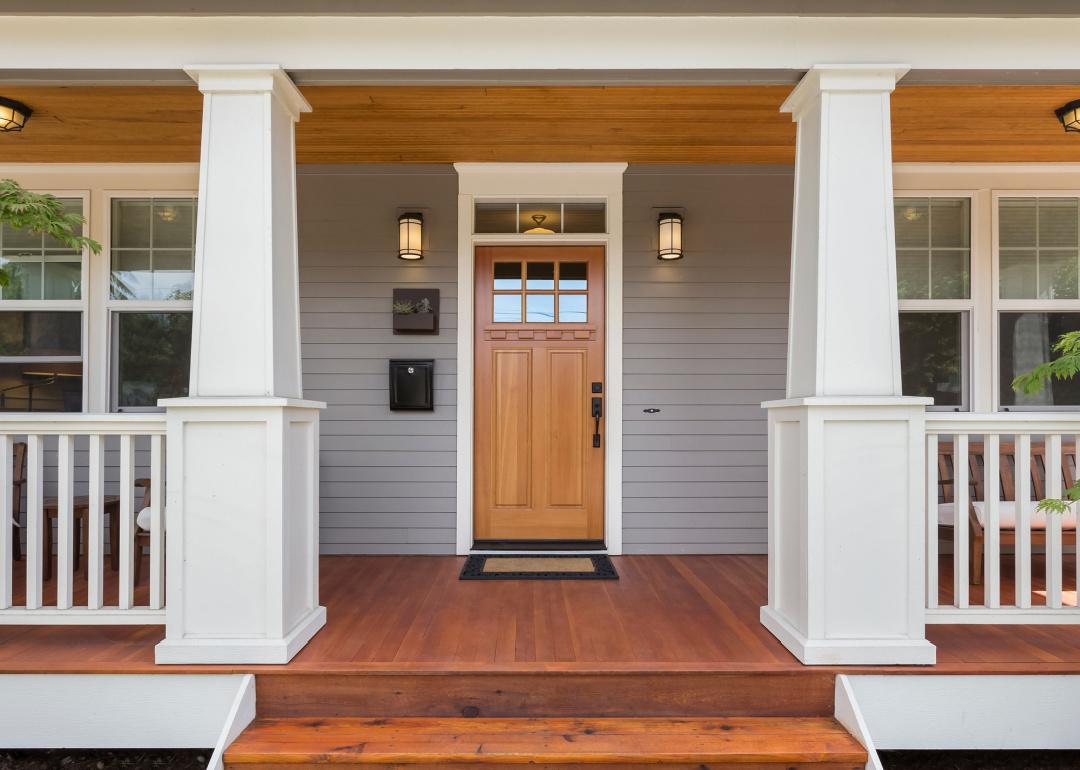
Justin_Krug // Shutterstock
#24. Mirrormont, Washington
Entry to residential home.
– Population: 4,196
Mirrormont, just west of Tiger Mountain State Forest in the southeastern suburbs of Seattle, was founded in 1962, with large lots featuring plenty of trees—and signature A-frame style homes. With great schools and outdoor activities nearby—including golf, tennis, and swimming at the local country club—it’s known for its privacy and strict rules to protect the neighborhood’s rustic character.
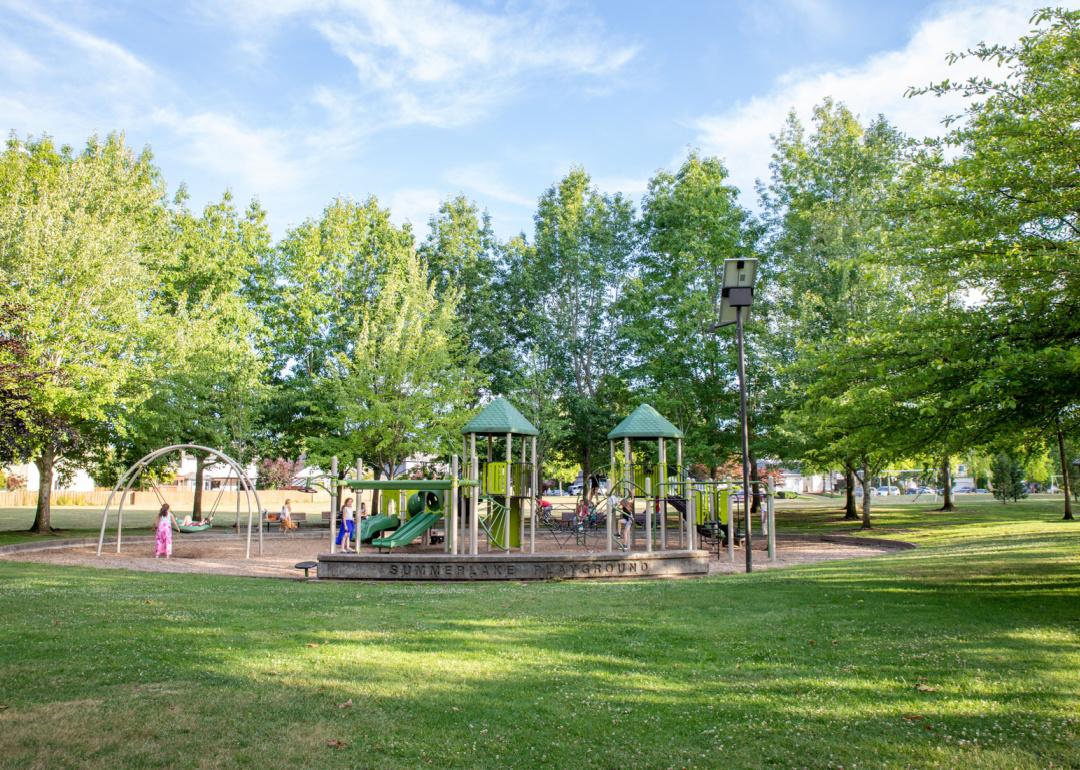
ARTYOORAN // Shutterstock
#23. Durham, Oregon
Park playground in Tigard.
– Population: 2,073
Southwest of Portland, this small community’s area is about one-fifth of parks and open space. It’s named for a man who ran mills on the creek that runs through town. He was followed by a family who ran a tree and shrub nursery and planted trees in the area, many surviving. In 1966, residents formed a city to stave off development. Local laws fiercely guard the trees, which can only be removed with a permit.
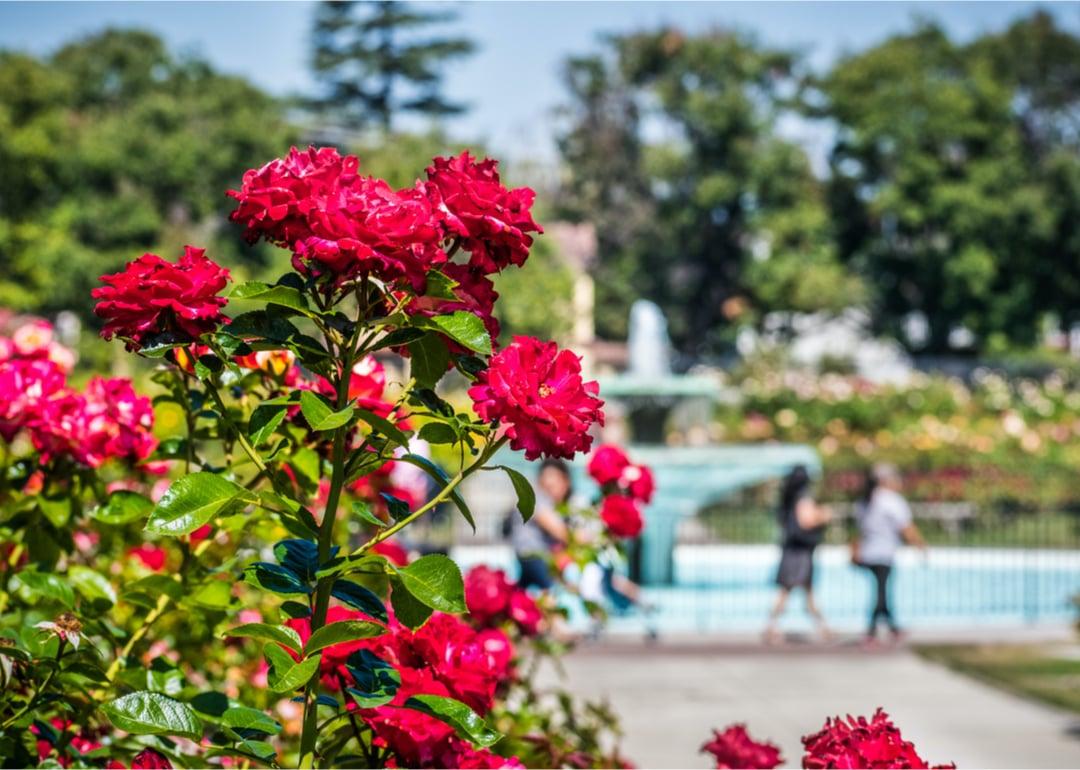
Sundry Photography // Shutterstock
#22. Cambrian Park, California
Flowers in park on sunny day.
– Population: 3,674
Although Cambrian Park sits inside the San Jose city limits, it is technically an unincorporated census-designated place—a confusing designation that stems from shifting school district boundaries, press coverage, and ZIP codes in the 1950s. Easy access to city and county parks, good schools, and shopping malls make Cambrian Park a desirable place to live.
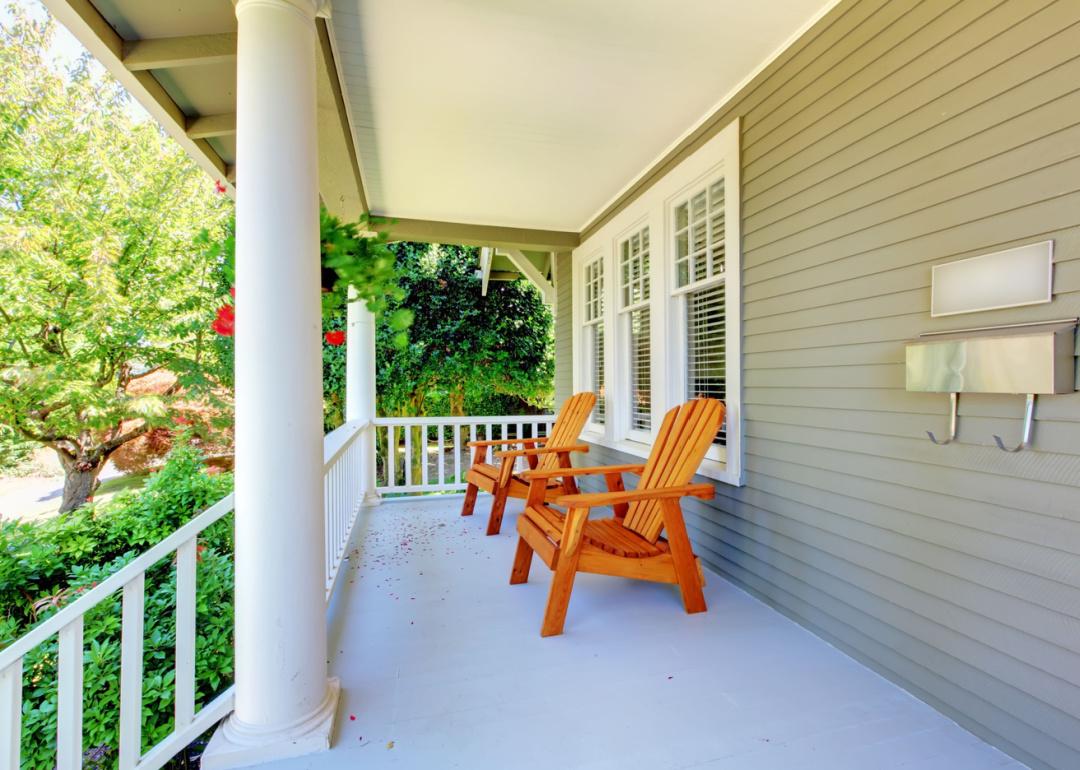
Artazum // Shutterstock
#21. Stafford, Oregon
Exterior residential porch with chairs.
– Population: 1,999
This self-described “hamlet” was created in 2006 on previously unorganized territory in Clackamas County, southeast of Portland. Its residents have set aside areas that will never be developed and set guiding principles and specific rules for any subdivisions or developments that may be proposed in the community.
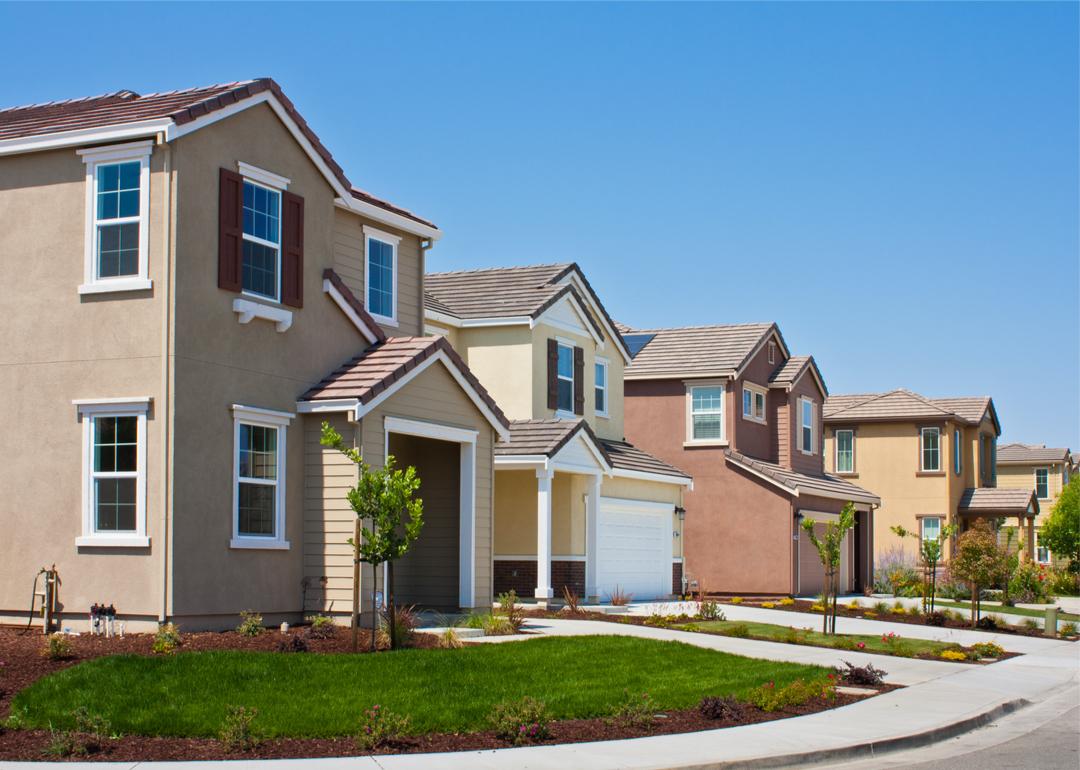
pbk-pg // Shutterstock
#20. Ladera, California
Suburban neighborhood.
– Population: 1,449
First founded as a housing cooperative in 1946, Ladera has a colorful history. The Peninsula Housing Association—the group of 262 members behind the purchase and development of the land—ran out of money before it could build its dream community. Then, the four non-white families were forced to withdraw from the investment. Only white people were allowed to buy homes in the resulting development—a requirement that remained in the housing rules until 2021.
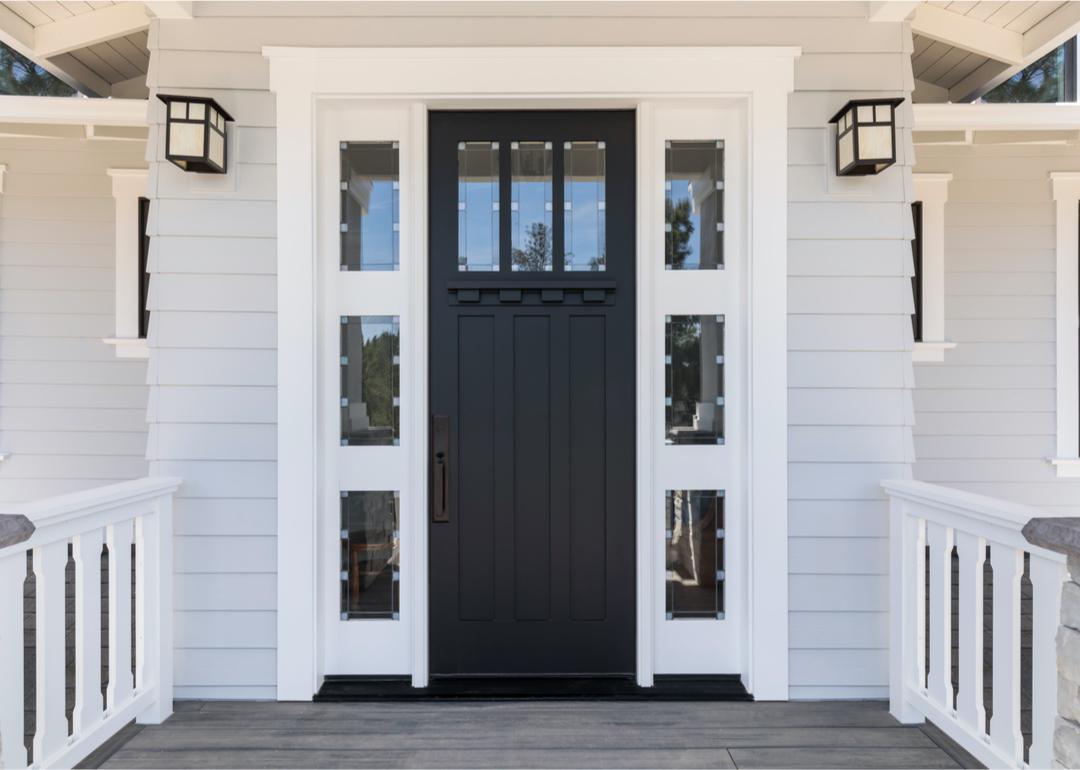
David Papazian // Shutterstock
#19. Portola Valley, California
Residential home.
– Population: 4,458
Though Portola Valley sits on top of the San Andreas Fault, the potential for seismic activity has not hampered the town. What is now known as Portola Valley began as a logging town community called Searsville. Once all the redwoods had been cleared, the logging companies deserted Searsville, and a collection of small farmers and a few wealthy estate owners moved in.
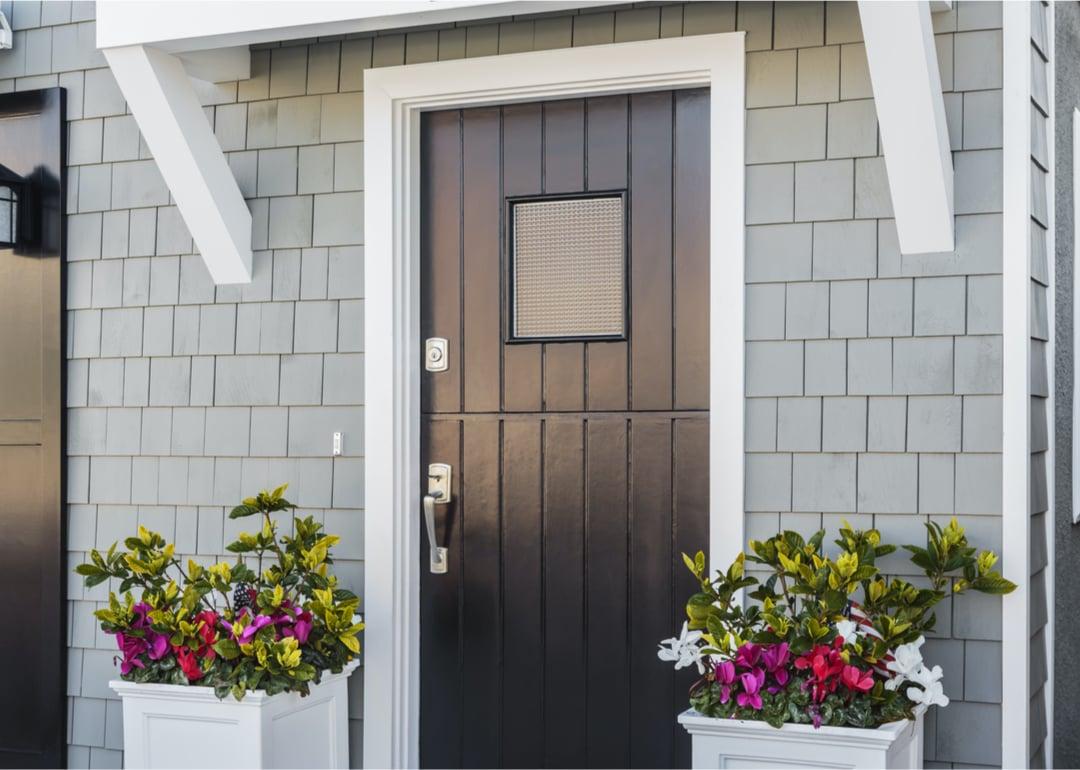
David Papazian // Shutterstock
#18. Mount Hermon, California
Entry to residential home.
– Population: 1,254
This small town in Santa Cruz County was originally known as Tuxedo Junction, a stop on the South Pacific Coast Railroad with a well-known resort. Today, in addition to residential homes, Mount Hermon hosts a Christian youth camp of the same name.
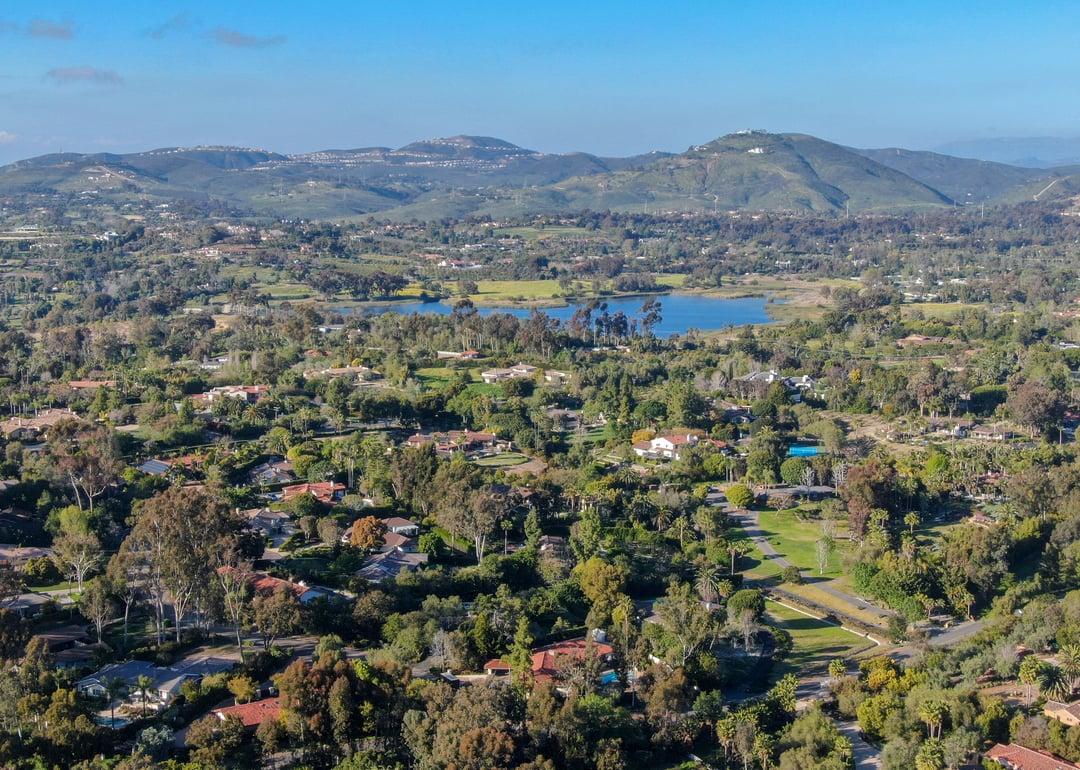
bonandbon // Shutterstock
#17. Rancho Santa Fe, California
Aerial view of Rancho Santa Fe.
– Population: 2,914
Rancho Santa Fe’s history dates back to a time before California’s statehood, when Mexico’s Gov. Pio Pico awarded the area in a land grant to San Diego’s first mayor Juan Osuna in 1840. In the early 1900s, the Atchison, Topeka and Santa Fe Railway company bought the land and planted eucalyptus trees for later use as railroad ties. After that experiment failed, the company decided to turn the land into a residential development, and Rancho Santa Fe, as we know it, was born.
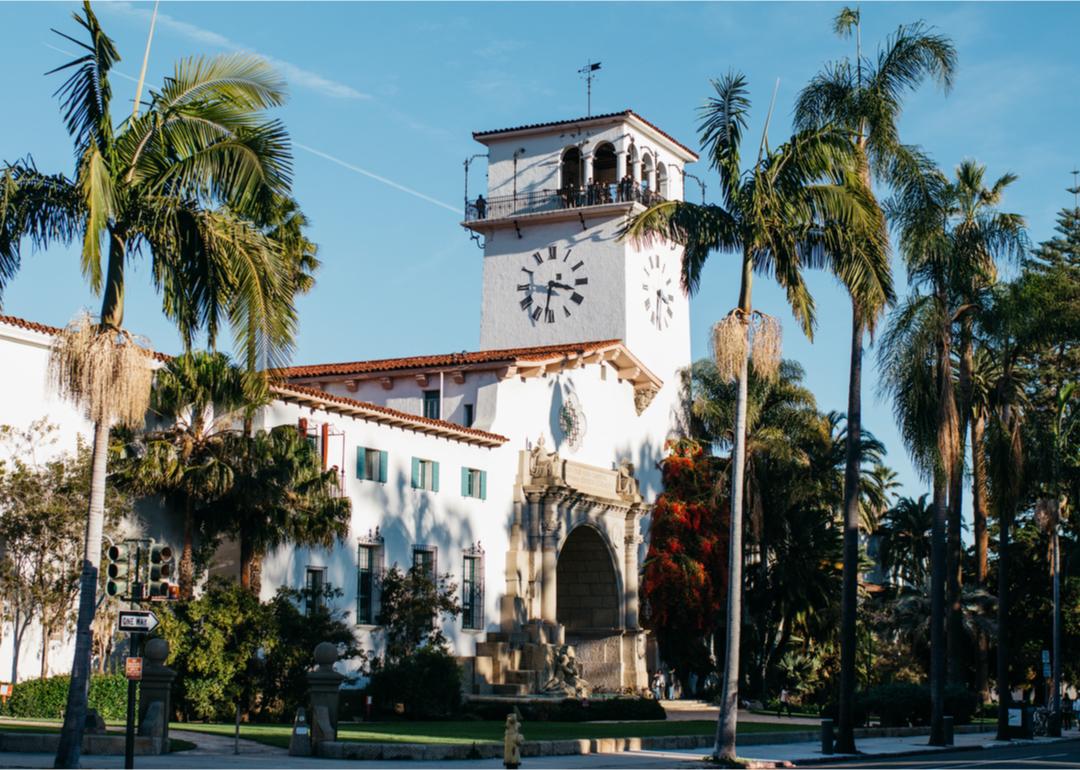
Tania Chatterjee // Shutterstock
#16. Mission Canyon, California
Mission style architecture in Santa Barbara.
– Population: 2,353
This suburb of Santa Barbara is named for nearby Old Mission Santa Barbara, founded by Spanish Franciscan friars in 1786, and the dramatic canyon landscape. Visitors flock to this neighborhood for the lush Santa Barbara Botanic Garden and several popular hiking trails.
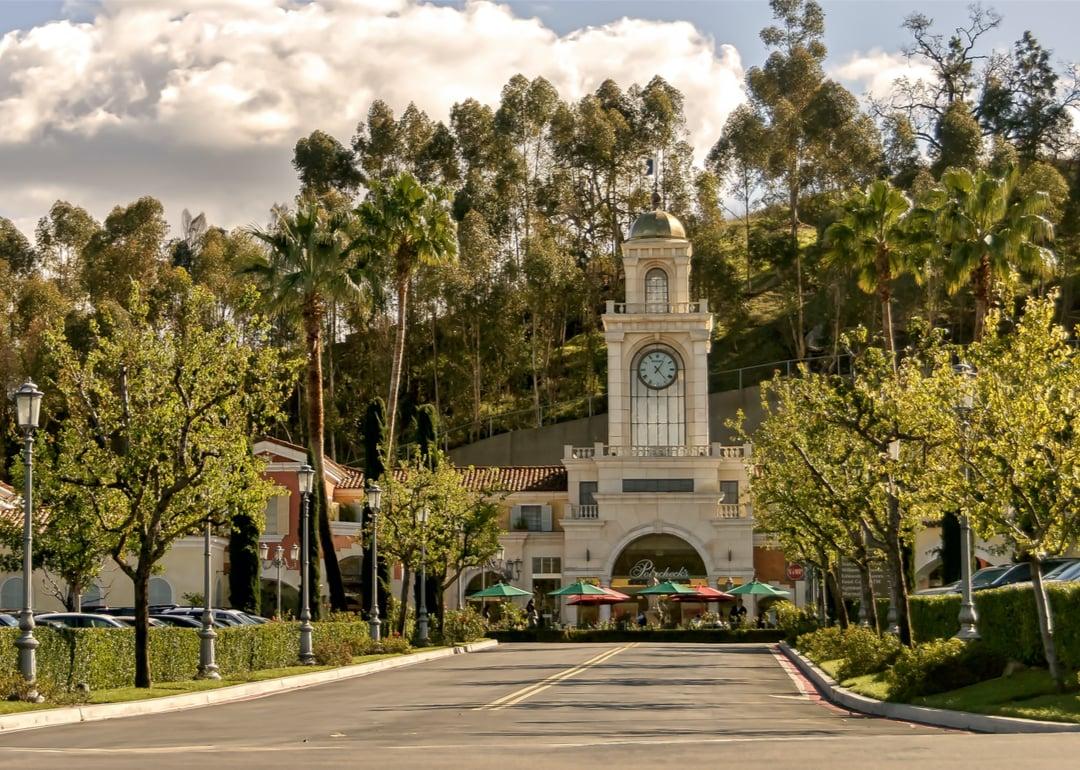
Lux Blue // Shutterstock
#15. Hidden Hills, California
Building with clocktower.
– Population: 2,182
Known for celebrity residents like Kardashian family members, music stars, and actors, Hidden Hills offers a rarefied version of a small-town lifestyle. This gated residential community developed in the mid-1950s boasts an extensive network of equestrian trails—some residents even pick up their kids on horseback. With so many A-list celebrities in the community, Hidden Hills also takes privacy extremely seriously. The community has even banned Google’s photography vehicles from recording the area for Google Street View.
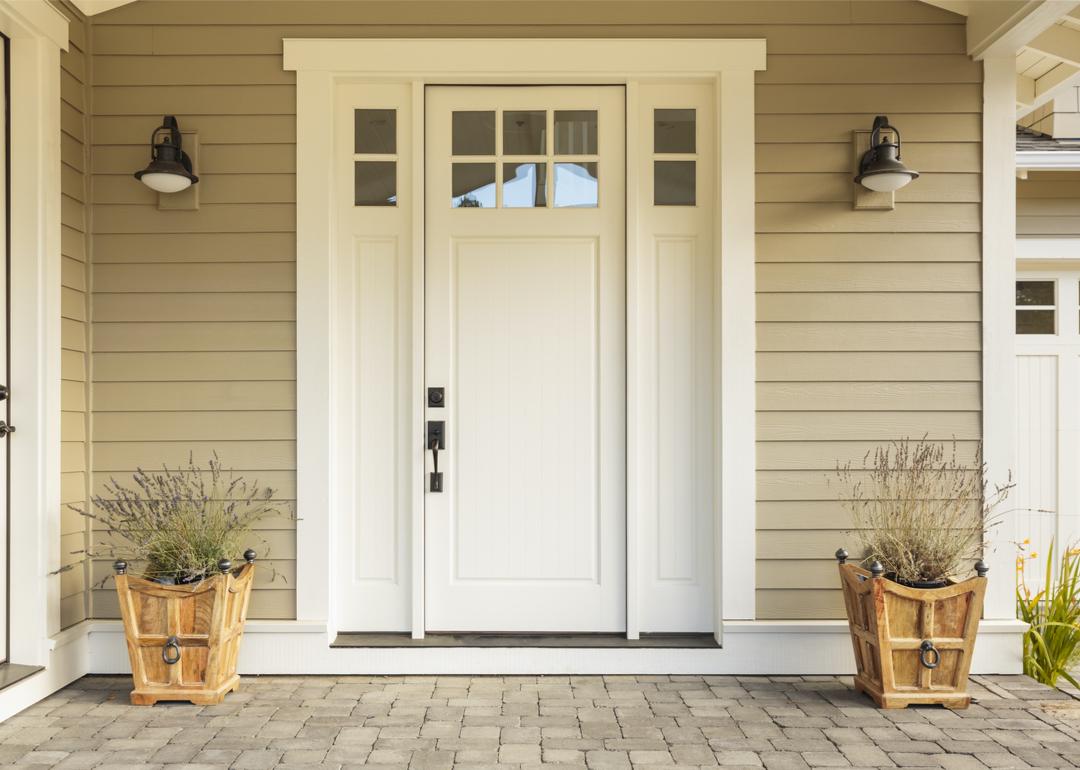
David Papazian // Shutterstock
#14. Sleepy Hollow, California
Entry to residential home.
– Population: 2,511
With just 750 homes, Sleepy Hollow is a quiet, peaceful Bay Area town beloved by equestrians and hikers alike for its proximity to two nature preserves. During World War II, the Army used a Sleepy Hollow golf course for the secret storage of munitions.
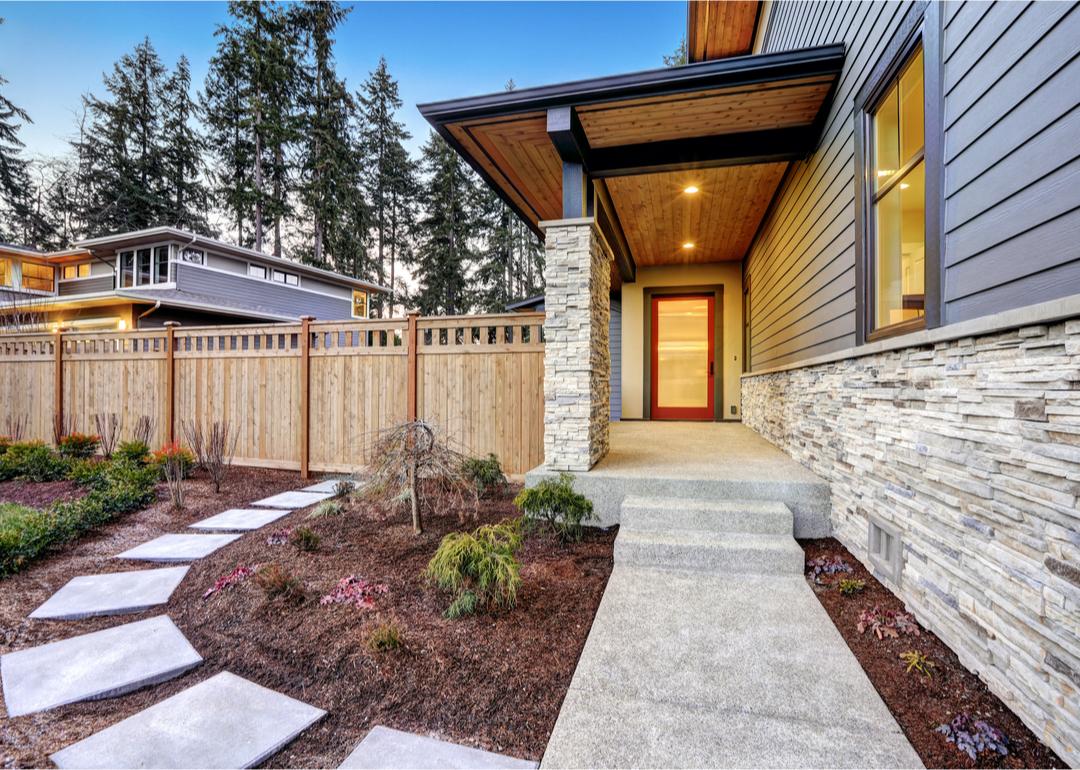
Artazum // Shutterstock
#13. Medina, Washington
Entry to residential home.
– Population: 2,928
Halfway between the Seattle suburbs of Bellevue and Kirkland, this community on the shore of Lake Washington is an attractive choice for families—as well as a few well-known wealthy residents like Jeff Bezos and Bill Gates. It’s also an expensive place to buy a home: According to Zillow, the median home price in Medina is more than $4 million. It’s no surprise that Medina was ranked the eighth-richest ZIP code by Bloomberg.
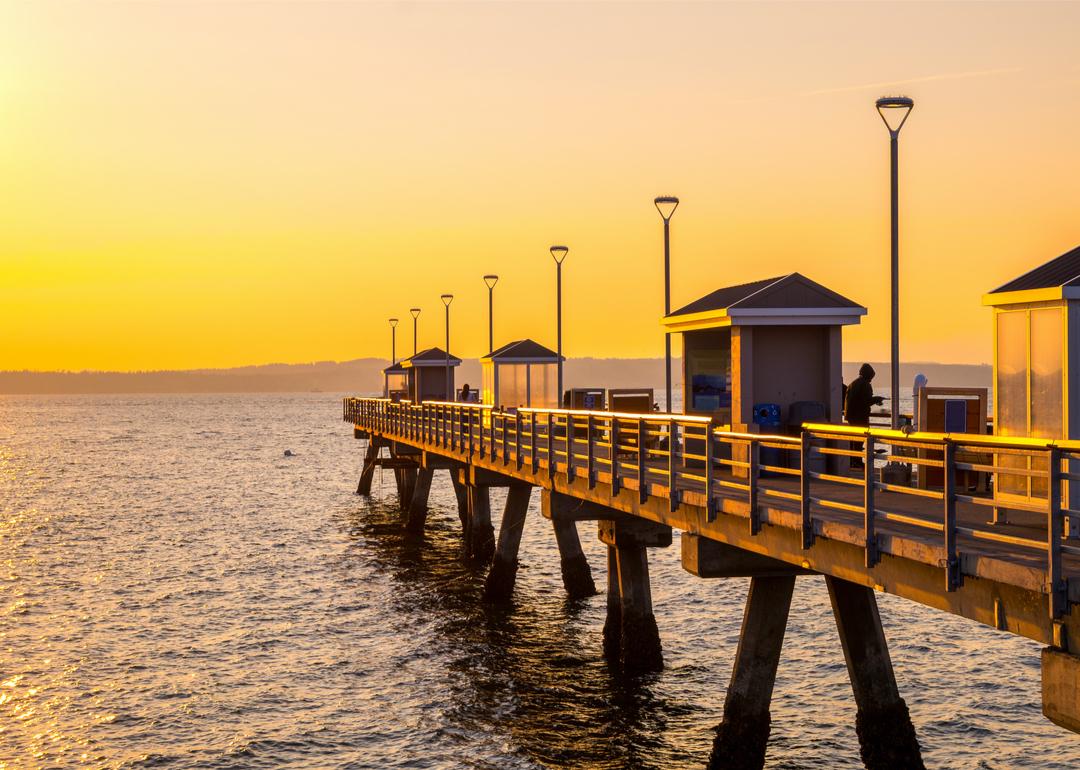
Nadia Yong // Shutterstock
#12. Woodway, Washington
Edmonds Fishing Pier in Woodway.
– Population: 1,119
Half an hour north of Seattle, you’ll find Woodway: a self-described “quiet place” where residents love to walk and bike around the evergreen-lined lanes and local parks. The town’s history dates back to 1912 when David Whitcomb Sr. developed 400 acres into modest, country-style homes.
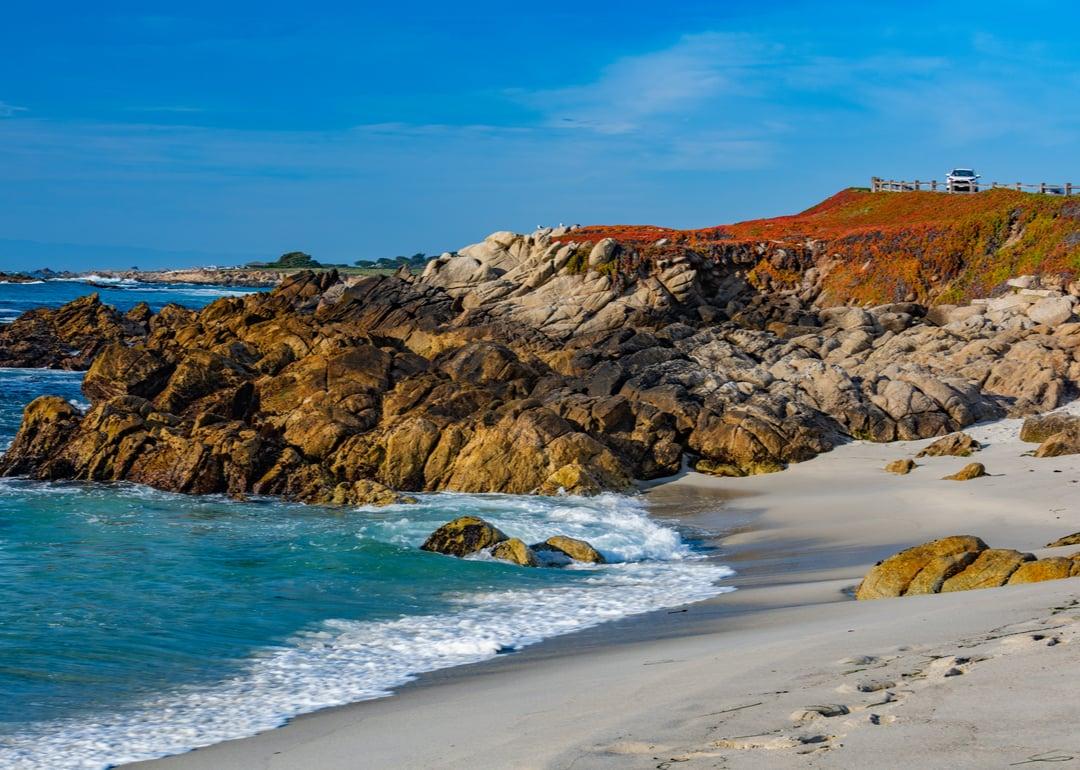
Abbie Warnock-Matthews // Shutterstock
#11. Del Monte Forest, California
Rocky beach in Del Monte Forest.
– Population: 3,604
This unincorporated community in Monterey County is known for its picturesque views. Visitors might want to spend a leisurely afternoon checking out all the sights on 17-Mile Drive, including the Lone Cypress—a rugged, salt air-pruned tree clinging to a craggy rock in the bay—and the iconic Pebble Beach Golf Links course. Though Pebble Beach is technically a separate community, it sits within Del Monte Forest.
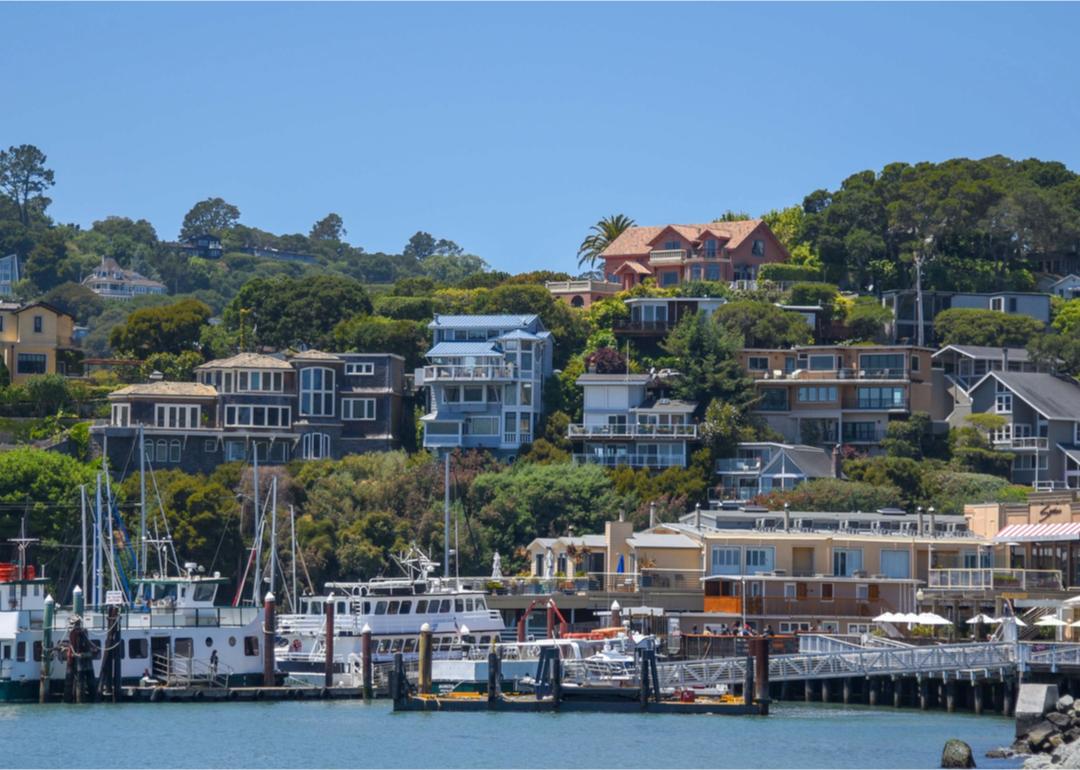
FourthNovemberStudio // Shutterstock
#10. Belvedere, California
Belvedere marina and coastal residential homes.
– Population: 2,309
In 1896, 33 residents voted to incorporate Belvedere as a city. The San Francisco Bay borders the town on three sides: It’s technically composed of two islands and a lagoon, giving the homes here unbeatable views.
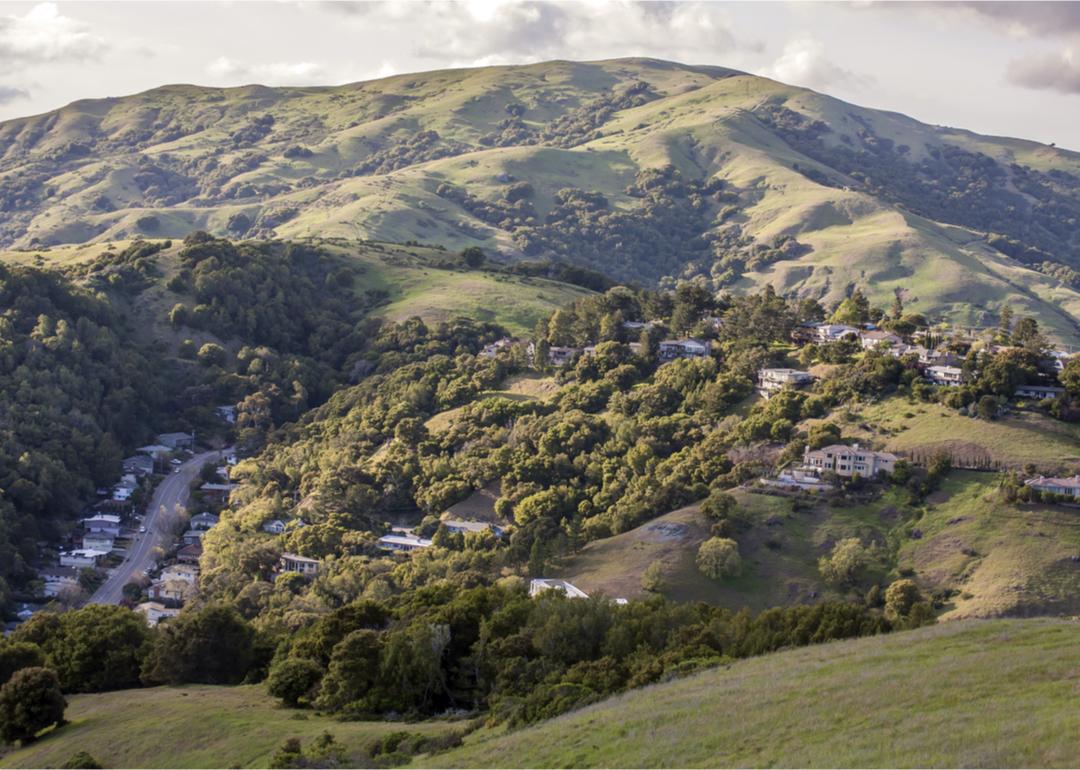
Marben // Shutterstock
#9. Ross, California
Aerial view of Marin County hills.
– Population: 2,405
First incorporated in 1908, this quaint town in Marin County is run by a five-person town council and a town manager. Ross has a real small-town feel, with just two churches, three schools, and a few cultural institutions like the Marin Art and Garden Center as well as a library run by the historical society.
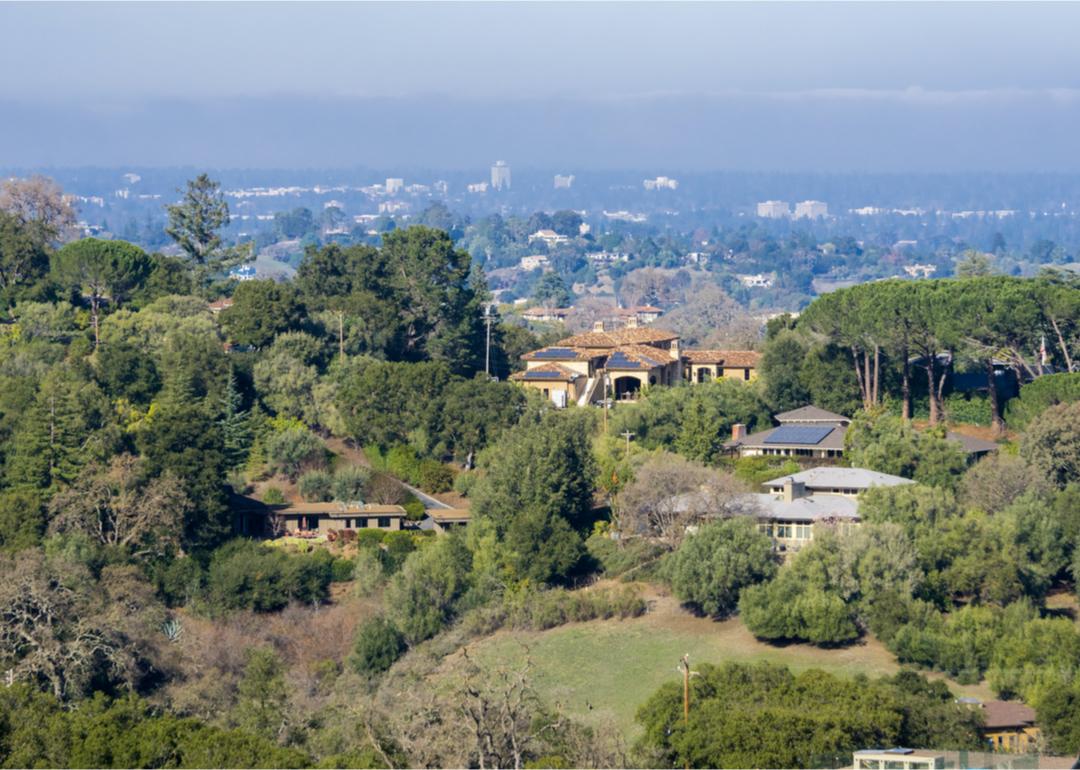
Sundry Photography // Shutterstock
#8. Loyola, California
Aerial view hilltop homes.
– Population: 3,564
Like the neighboring towns of Mountain View and Los Altos, Loyola is an affluent community. In December 2022, the median price buyers paid for Loyola homes was $3.8 million. Top-rated schools, luxury amenities like a country club, and its proximity to the Bay Area make Loyola an appealing—if pricey—place to live.
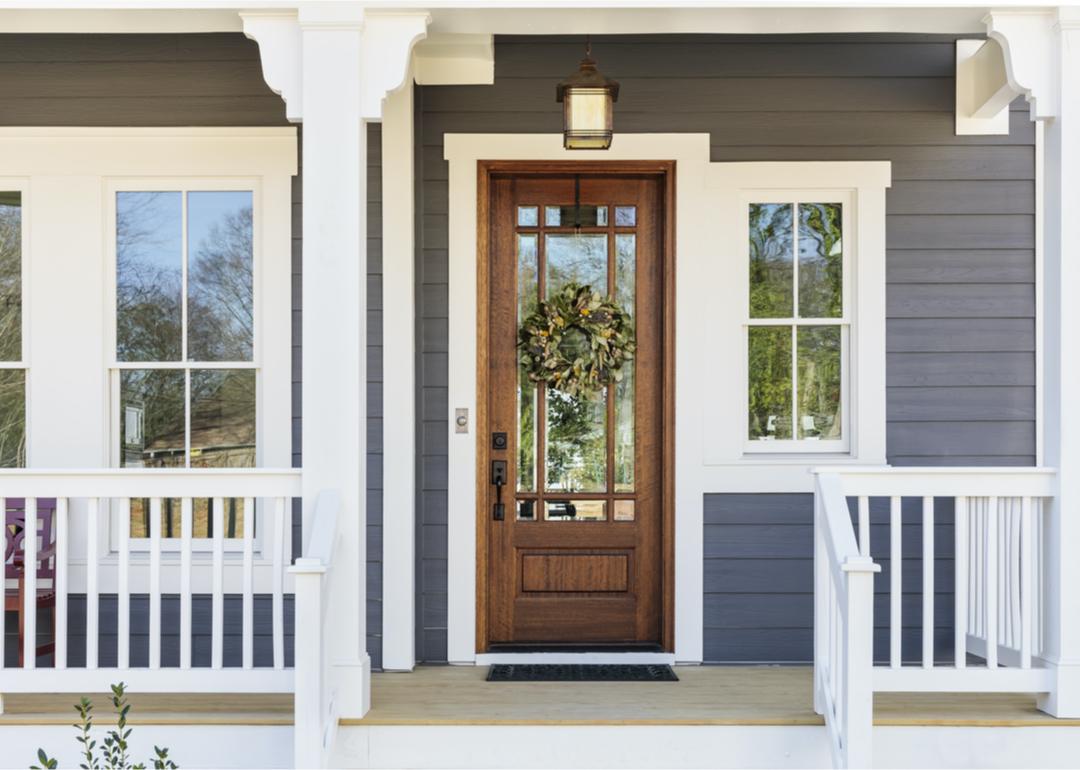
David Papazian // Shutterstock
#7. Monte Sereno, California
Entry to residential home.
– Population: 3,502
When a community began forming in what is now Monte Sereno in the early 1900s, the area was rural and agricultural. Today, you won’t find any orchards, farms, or livestock, just a peaceful residential community that has been home to author John Steinbeck, painter Thomas Kinkade, and Beat poet Neal Cassady over the years.
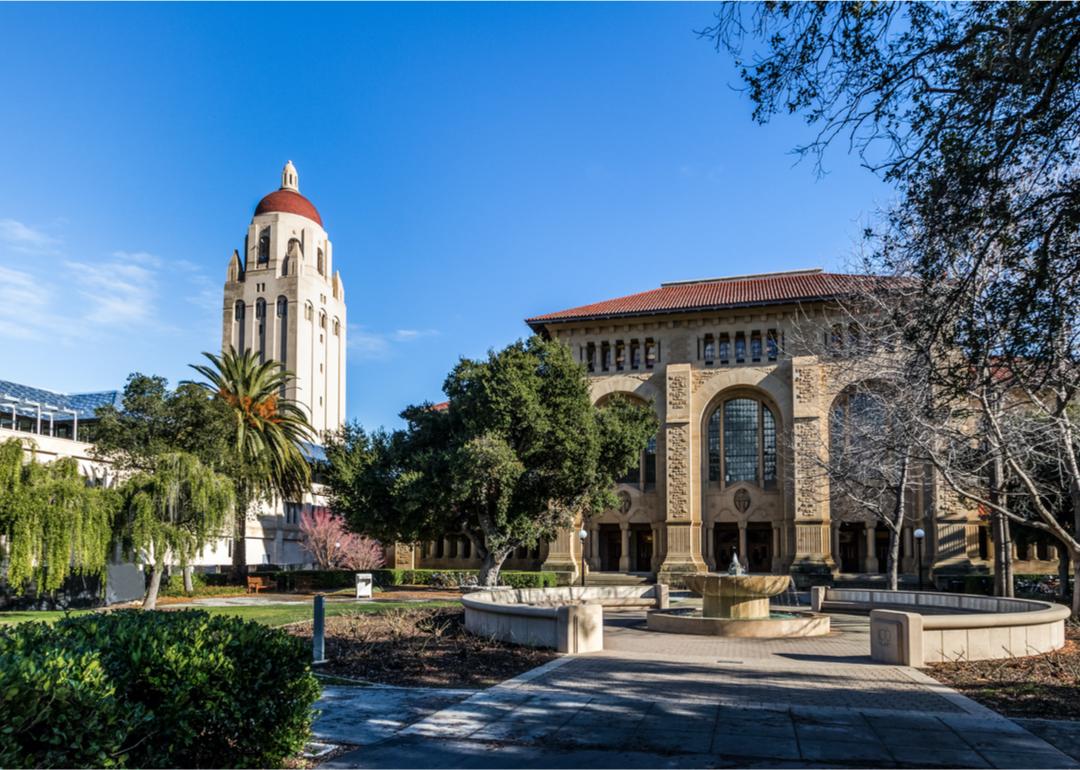
Diego Grandi // Shutterstock
#6. West Menlo Park, California
Stanford University.
– Population: 3,492
This small community sits just west of Stanford University, with most of its bars, restaurants, and local businesses lining Alameda de las Pulgas. Excellent school districts make this area particularly sought after by Bay Area families.
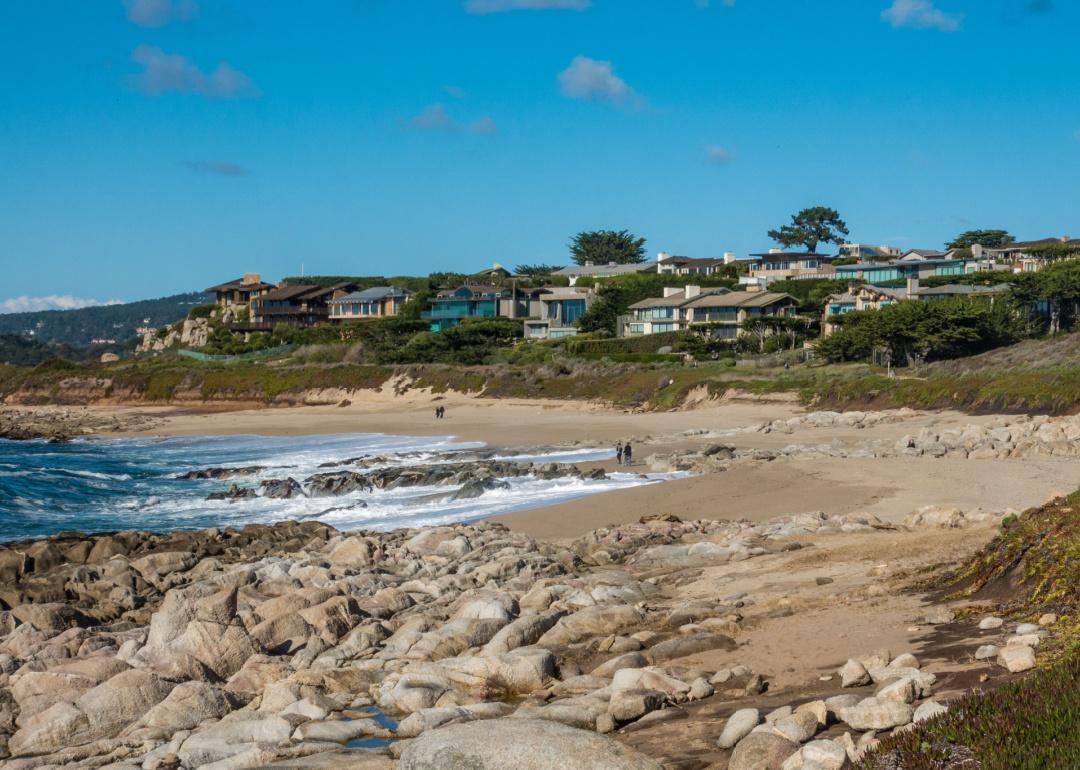
David A Litman // Shutterstock
#5. Carmel-by-the-Sea, California
Beach and homes at Carmel by the Sea.
– Population: 3,296
A popular tourist destination in its own right, Carmel-by-the-Sea is renowned for its charming downtown, historic mission, top-notch restaurants, and stunning Carmel Beach. Some of the town’s first residents were artists such as author Jack London and poet Robinson Jeffers, giving the city an intellectual bent and creative spirit.
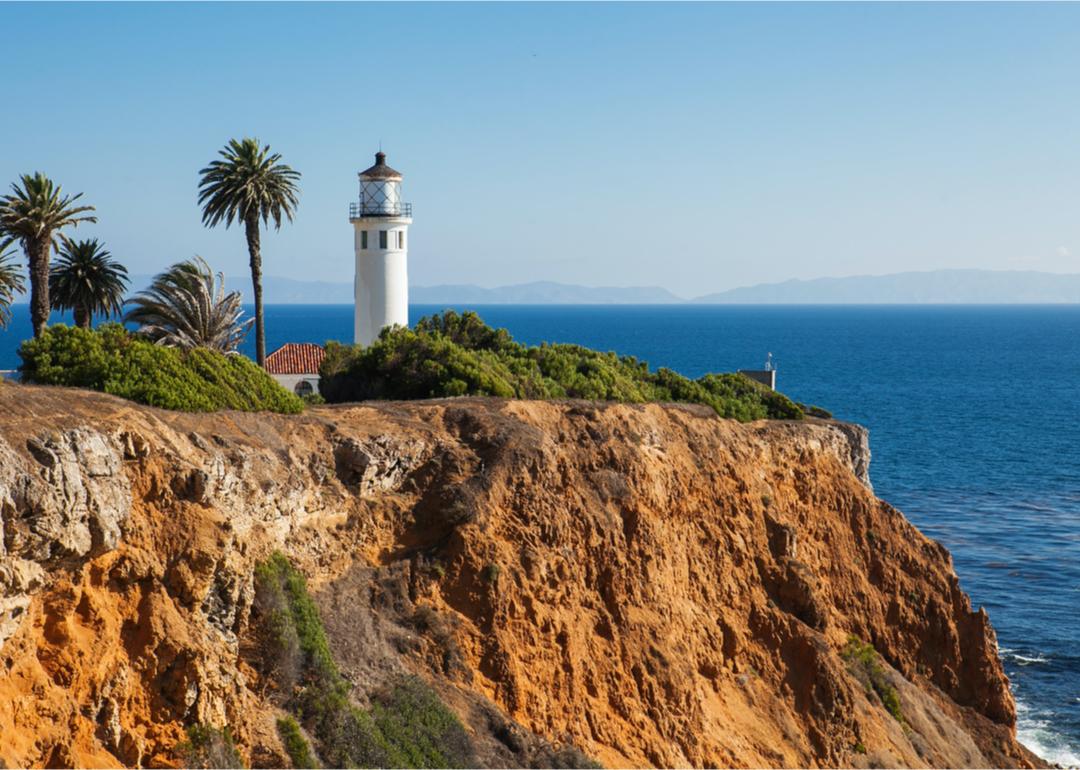
MILA Zed // Shutterstock
#4. Rolling Hills, California
Lighthouse on Palos Verdes Peninsula.
– Population: 1,436
This gated residential community on the Palos Verdes Peninsula covers just three square miles, but each of the 700 properties has at least one acre and is zoned for keeping horses. Nearby attractions include the Palos Verdes Art Center, the hiking and equestrian trails in the Portuguese Bend Reserve, and the architecturally significant Wayfarers Chapel designed by Lloyd Wright, the son of famed architect Frank Lloyd Wright.
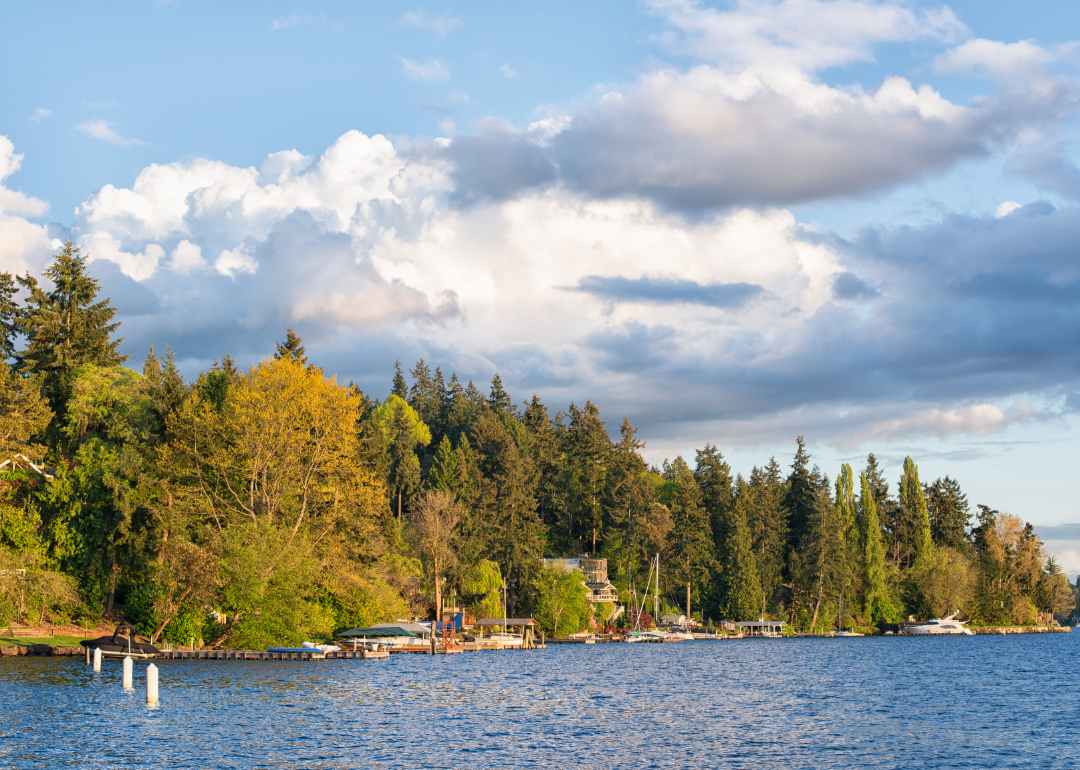
Canva
#3. Yarrow Point, Washington
Coastal area near Bellevue.
– Population: 1,365
Set on a peninsula in Lake Washington, Yarrow Point borders the #1 town on this list. Though the first homesteads date back to the 1880s, Yarrow Point wasn’t incorporated until 1959. Nearly one-fourth of the homes here have waterfront views—but even residents who aren’t so lucky can enjoy public parks like the Wetherill Nature Preserve and Road End Beach.
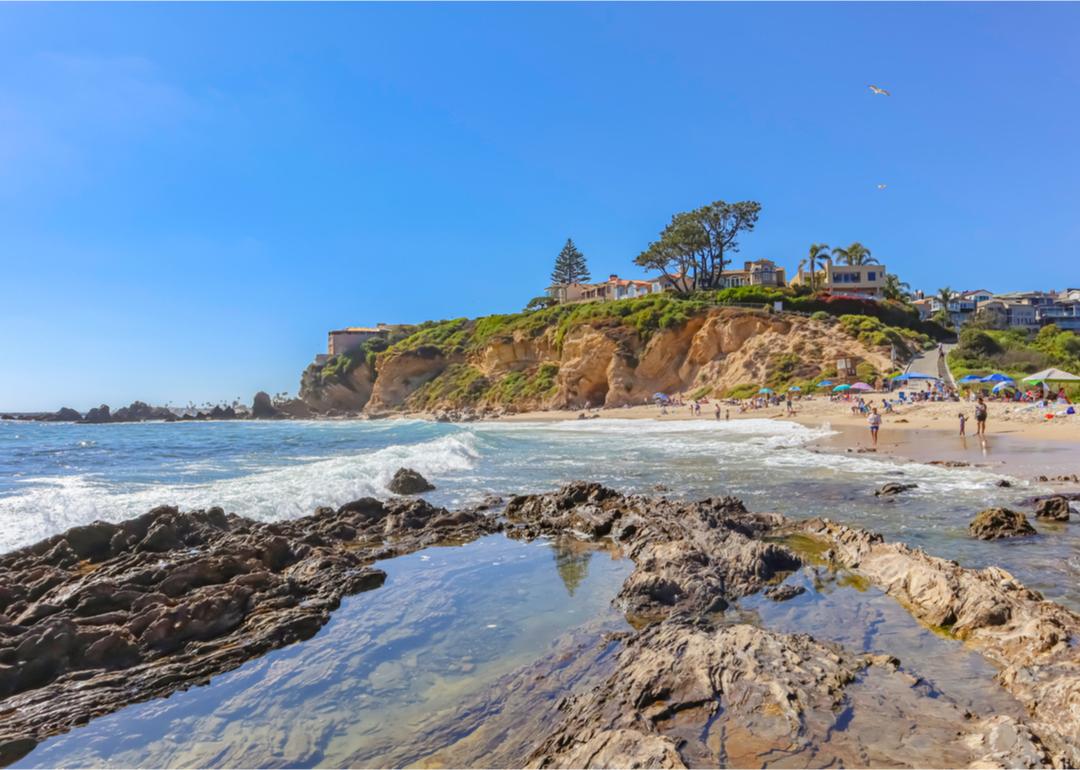
LuvAlisa // Shutterstock
#2. Del Mar, California
Little Corona Del Mar Beach.
– Population: 4,008
Another coastal destination, Del Mar’s gorgeous beaches, legendary horse racing, and delightful downtown village are attractive to both visitors and prospective residents. The city hosts about 2 million visitors annually.
Canva
#1. Clyde Hill, Washington
Rooftops in Clyde Hill.
– Population: 3,118
From some of Clyde Hill’s higher elevations, you can spy views of Mount Rainier, the Olympic Mountains, and the Cascade Mountain Range, in addition to Lake Washington and the Seattle skyline. The area was first settled in 1882 by Irish immigrant Patrick Downey, who farmed strawberries on his claim. Clyde Hill made national news in 1975 when its mayoral race ended in an even tie; the contenders flipped a coin to decide the race.
